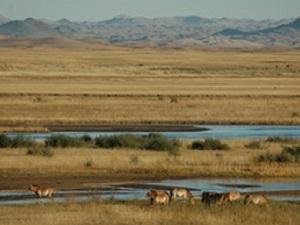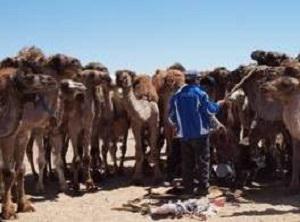Kim Notin
Bactrian camels have a relatively low impact on the steppe grasslands and offer interesting economic possibilities for herders. Therefore, to meet both conservation and development objectives, the Steppe to Sustainability project aims to improve camel-based livelihood activities in the herding communities surrounding the Przewalski’s horse reintroduction site in Mongolia.

In 1990 the Association Takh was created to reintroduce the last wild horse species, the Przewalski’s horse (or Takh), to Mongolia. We are an “integrated conservation project”, meaning that we also work toward building a well-organized, prosperous community of herders that manage a pasture capable of

harbouring a multitude of wild and domestic animals. To this end, the Association Takh is comprised of 3 overlapping programs in Mongolia: Przewalski horse research and reintroduction, rangelands research and conservation, and community development.
Our community development program works to increase the livelihood of herders through producing added-value, environmentally-friendly livestock products; while our rangeland program works to prevent pasture degradation by creating and maintaining favourable forage for wild and domestic ungulates. The Steppe to Sustainability project aims to grow camel-based economic activities, because camels are well adapted to harsh conditions and can provide stable income. Unfortunately, their populations continue to decline in favour of Cashmere goats, the “cash crop” of the Mongolian steppe.
The Steppe to Sustainability project aims to achieve the following objectives:
1. We will collaborate with herders and colleagues to investigate and expand 4 livestock activities in the bags (communities) living nearest to the Przewalski’s horse release site. These activities are: expansion of felt craft production, expansion of baby camel wool collection, exploring the feasibility
of selling camel milk products, and producing handspun camel wool yarn to sell alongside the felt products in France. The goal is to find activities that are economically, socially and environmentally sustainable.
2. To facilitate any or all of these 4 activities, we will work with the herders to design, create and facilitate a suitable organizational model, such as a camel herders’ cooperative.
3. A challenge of our community development work is assessing how sustainable economic activities directly impact herder livelihoods and the environment. In an effort to clearly link conservation and income generation, we will collaboratively draft conservation contracts between Association Takh and camel herders. In such a contract, Takh commits to purchasing livestock products at an elevated price, selling those products abroad and sending all the profits to the herders; while the herders commit to specific conservation actions such as managing domestic horses, which are the biggest threat to Przewalski's horses.